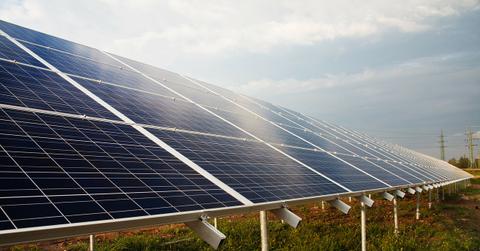China Already Exceeded Their 2020 Goal For Solar Energy Capacity
China has a stranglehold on the solar power industry, and that couldn't be more clear after they've blown past their goal for 2020 in the summer of 2017. The country was able to achieve such a big lead by the government jumping into the industry.
Updated May 21 2019, 3:31 p.m. ET
China has already blown past their solar capacity goals, more than three years in advance. By the end of 2020, the country was hoping to see 105 gigawatts worth of solar panels installed. As of last July, they’ve already reached the 112.34-gigawatt mark, and now they could reach double their old goal three years from now.
This year has seen record amounts of solar energy being installed in China. Over the first six months of the year, they added 24.4 gigawatts of capacity. Most of that was added in June, where they saw 13.5 gigawatts hit the ground running. In July alone, they added 10.5 more gigawatts. Doing all the math, that’s nearly 35 gigawatts worth of solar panels installed over 2017.
Putting things in perspective, no other country had more than 42.8 gigawatts of total capacity at the end of 2016, which was in Japan. While they will be limited to installing around eight gigawatts this year, the United States has jumped up to 44.7 gigawatts of solar power after the first quarter of 2017.
Considering that China was able to reach double-digit installation totals in one month, expectations of adding 40 to 45 gigawatts more by the end of this year isn’t impossible. They’re lapping the entire world and only the US can potentially stay in the same ballpark. Over the next few years, cutting costs, limiting incentives, and advancing technology will all make solar panel production faster to meet demand.
China received a head start in the solar industry way back in the late 1990’s when they needed to make solar panels for Germany. They took the idea and the government started buying solar companies and attracted others to move into the country. Semi-automated factories were created to efficiently produce solar panels.
By 2015, China adopted a feed-in tariff that paid consumers to invest in solar energy, and demand skyrocketed to the point where their market exceeded Germany. All their investments in the solar industry paid off and they’ve become a juggernaut in the industry, which has led to falling prices.
Experts are divided on if the country simply wanted to wipe out competition or if they truly wanted to get out of traditional fossil fuels. David Mooney, Director at the National Renewable Energy Laboratory (NREL), noted with Scientific American that some view China’s dominance as a monopoly that’s affecting the industry. There's also the ongoing issue of the country building more panels than they can turn on.
However, Mooney brings up a counterpoint and explains that the United States probably benefited from the surge: “250,000 American jobs in the solar panel assembly, installation and maintenance business [have been added], many of which wouldn’t have happened without the push from China that dramatically lowered solar module prices.”
While that debate continues, there’s no doubt that generating more electricity from renewable sources like solar panels ultimately cleans up the environment and aids the country's massive smog problems in urban areas. China is also on pace to reach well over 200 gigawatts of capacity themselves by 2020, and it doesn’t look like that trend will be slowing down anytime soon.
